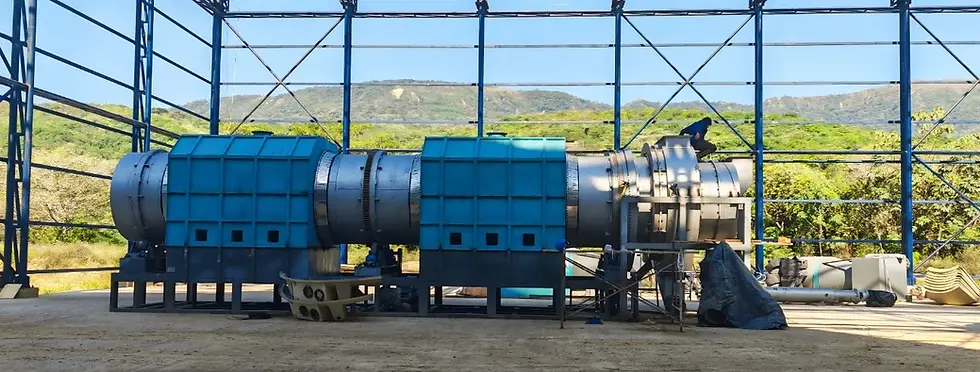Pyrolysis Plant Contribution to Circular Economy Development
- lee784287
- 9月19日
- 讀畢需時 2 分鐘
The global economy is progressively moving away from linear models of production and consumption. In this context, a pyrolysis plant has become a vital instrument for transforming discarded materials into renewable outputs. By decomposing polymers, biomass, and hydrocarbons under oxygen-limited conditions, this technology reduces waste volumes while creating usable resources. Its role extends beyond recycling, positioning it as a cornerstone of circular economy development.
Converting Waste into Valuable Commodities
A pyrolysis plant processes diverse feedstocks such as waste tires, plastics, and oil sludge. Instead of sending these materials to landfills, they undergo thermochemical conversion to produce pyrolytic oil, syngas, and carbon black. Each of these outputs re-enters the industrial cycle, reducing the demand for virgin raw materials. A pyrolysis machine for sale not only signifies an investment in equipment but also represents an entry point into a closed-loop production model where waste is continuously repurposed.

Enhancing Resource Efficiency
Traditional waste disposal systems consume energy and generate pollution without delivering tangible recovery benefits. In contrast, the pyrolysis reaction captures embedded energy from discarded matter and reintegrates it into industrial use. Syngas fuels the heating system, reducing external energy demand. Meanwhile, recovered pyrolytic oil serves as a substitute for conventional fossil fuels in power generation or refining operations. This closed-loop efficiency demonstrates how the pyrolysis plant underpins the principles of resource conservation central to the circular economy.
Reducing Environmental Burden
Uncontrolled burning and improper disposal of plastics or tires release harmful compounds into the environment. Through regulated thermochemical decomposition, emissions are minimized, and environmental hazards are curtailed. The resulting solid carbonaceous residue can be processed further for applications in rubber reinforcement or construction materials. By diverting persistent pollutants from the natural environment, the pyrolysis plant not only manages waste but also mitigates ecological stress.
Supporting Industrial Diversification
The outputs generated by pyrolysis open opportunities for downstream industries. Pyrolytic oil can be refined into transport fuels or chemical feedstock. Carbon black enhances product performance in tire manufacturing and pigment production. Even the surplus syngas can support microgrid energy systems. As industries increasingly adopt sustainable practices, the economic utility of a pyrolysis machine for sale becomes evident, providing flexible resource channels across multiple sectors.
Alignment with Circular Economy Policies
Governments and international organizations are advocating policies that incentivize resource recovery and low-carbon technologies. The pyrolysis plant aligns with these directives by addressing the dual challenge of waste management and energy security. Its adoption accelerates compliance with environmental regulations, while simultaneously strengthening local economies through material reuse and job creation. The technology exemplifies how industrial systems can synchronize with the broader framework of circular economy initiatives.
Future Perspectives
As technological refinements continue, the integration of automation, emission control, and advanced refining systems will expand the applications of pyrolysis-derived outputs. The circular economy thrives on innovation that bridges sustainability with profitability. Within this paradigm, the pyrolysis plant stands as a decisive contributor, reshaping waste into assets and driving forward the transition to regenerative industrial practices.



留言